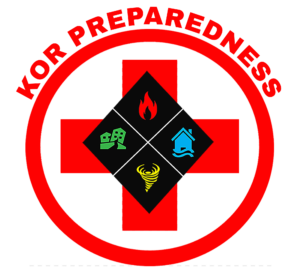“Identified by its bright beautiful colors”
Medicinal use of Heartleaf Arnica:
The whole plant is antiecchymotic, antiphlogistic, nervine, sternutatory, and vulnerary. When applied intravenously or orally it causes a rise in body temperature. All parts of the plant may be used, but the flowers are used in preference to the root. They have a discutient property and a tincture is used as an external application to swellings, sprains, bruises, and wounds. A salve applied to cuts helps to keep down infections.

Fortunately, Heartleaf arnica (Arnica cordifolia) is one of our more easily identifiable Arnicaspecies. The plant derives its common and scientific names from its basal leaves which usually have a deep, heart-shaped notch at the base. The lower leaves are borne on long petioles (leaf stalks) and have coarsely-toothed margins. By comparison, other Arnica species generally have sessile or smooth-margined leaves or at least lack the heart-like shape. Arnica cordifolia can also be recognized by its single (occasionally 2-3) large and showy flower head of bright yellow petal-like ray flowers surrounding a central cluster of small, yellow tubular disk flowers. Heartleaf arnica is one of the most widespread of the arnicas in North America, occupying forests, thickets, and streamsides in the mountains from Alaska and western Canada to central California, Arizona, and New Mexico (with isolated populations in Michigan).
Europeans and Native Americans independently discovered the medicinal qualities of Arnicaspecies. For centuries, the European species Arnica montana has been used to treat acne, bleeding, and pain. More than 100 arnica-based teas and preparations are still marketed in Germany, though physicians caution against over-consumption or taking it internally, as the plant can be toxic. Native Americans used the root of Heartleaf and other arnica species to treat sort throats, aching teeth, cuts, and bruises. Mixed with ocher and bird feathers, arnica was also used as a sort of love potion. No word from the medical community on the efficacy of the latter.
“discovered by native americans for it’s medicinal properties”
It is an anti-inflammatory and vulnerary herb used to treat pain, swelling, and bruising associated with traumatic injuries such as fractures, sprains, bruises, and contusions, as well as muscular pain from overexertion. For this purpose, it can be used topically on unbroken skin or homeopathically. Arnica is toxic and must be used with caution and under the close supervision of a qualified herbalist if taken internally. Homeopathically, arnica is very safe and is used to support healing in the case of shock, post-traumatic stress disorder (PTSD), post surgical trauma, invasive dental work, and concussion in addition to its aforementioned use for injuries.
No first aid kit is complete without arnica oil or salve, and fortunately, they are both very easy to make. Due to overharvesting, A. Montana should not be wild-harvested, and harvesting of the North American species should be limited. We recommend buying cultivated arnica from a trusted source like Mountain Rose Herbs in Oregon or Zack Woods Herb Farm in Vermont























































